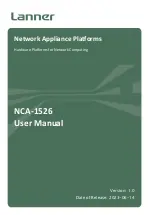
Object
Material
Transmission Tendency
Column
Ferroconcrete
Radio waves can penetrate them, but the more
iron there is, the more radio waves tend to be
reflected or diffracted.
Metal
Radio waves tend to be reflected or diffracted.
Cabinet
Steel
Radio waves are usually reflected or diffracted,
and rarely penetrate them.
Wood
Radio waves can penetrate them, but they are
weakened.
General Installation
Obtain a map of the SIP-CS installation site, identify the service area required by the user on the map, and
then plan the location of each SIP-CS.
It is recommended that you install the SIP-CS at a height of 2 m or more for less obstructions.
Follow the procedure below to perform site planning for general installation:
1.
Decide where to install the first SIP-CS.
2.
Install the second SIP-CS at a distance of about 30 m from the first SIP-CS. If you cannot maintain a
distance of 30 m due to building limitations, install the second SIP-CS as far away as possible in the
overlapping range of the air synchronisation coverage area.
Notice
Locate SIP-CSs so that places where most calls will be made are within the coverage area of as many
SIP-CSs as possible.
3.
When you have covered the necessary area, make the SIP-CS that is adjacent to most other SIP-CSs into
the Air Sync Master CS.
Adjoining Installation
When you want to make many simultaneous calls in a small area, locate SIP-CSs according to the table below.
Simultaneous Calls
Number of CSs
Distance between CSs
1
-
2
1 m (Example 1)
Up to 12
3
10 m (Example 2)
Up to 16
4
10 m (Example 3)
More than 17
not recommended
not recommended
*1
Depending on radio conditions (e.g., interference from other systems), the maximum number of simultaneous calls may be reduced.
28
Installation Guide
4 Deployment Procedure
















































